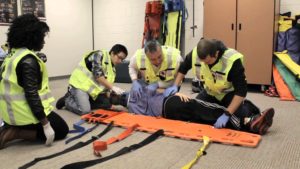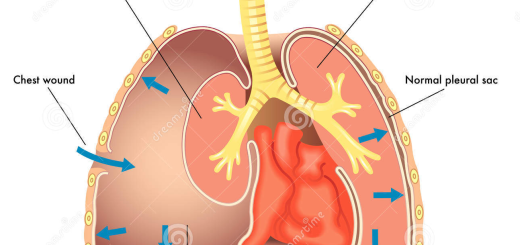When should you immobilize the c-spine?
 Spinal immobilization is performed in order to reduce the chance of further damage occurring to the spinal cord. First aiders and first responders may be taught a variety of different methods to immobilize the c-spine.
Spinal immobilization is performed in order to reduce the chance of further damage occurring to the spinal cord. First aiders and first responders may be taught a variety of different methods to immobilize the c-spine.
The indications for spinal immobilization will be given by the mechanism of injury and the clinical signs and symptoms suggesting the risk of injury to the spine.
Spinal immobilisation should always be considered in the following groups of patients:
- where the mechanism of injury raises the possibility of spinal damage (includes any blunt trauma above the clavicular line)
- where there is pain or tenderness in the spine
- where there are neurological signs relating to spinal injury
- where there is an altered level of consciousness, intoxication or distracting injuries elsewhere
- where there is known to be a pre-existing injury to the spine.
As soon as you believe there is a risk of spinal injury, you should immobilise the head. This is initially done by holding the head with your hands, your hands should remain in place until spinal immobilisation has been completed.
There are various different methods of spinal immobilization and you should always follow your local protocols and training.
Want to learn more first aid skills? Sign up to one of our free online first aid courses!





